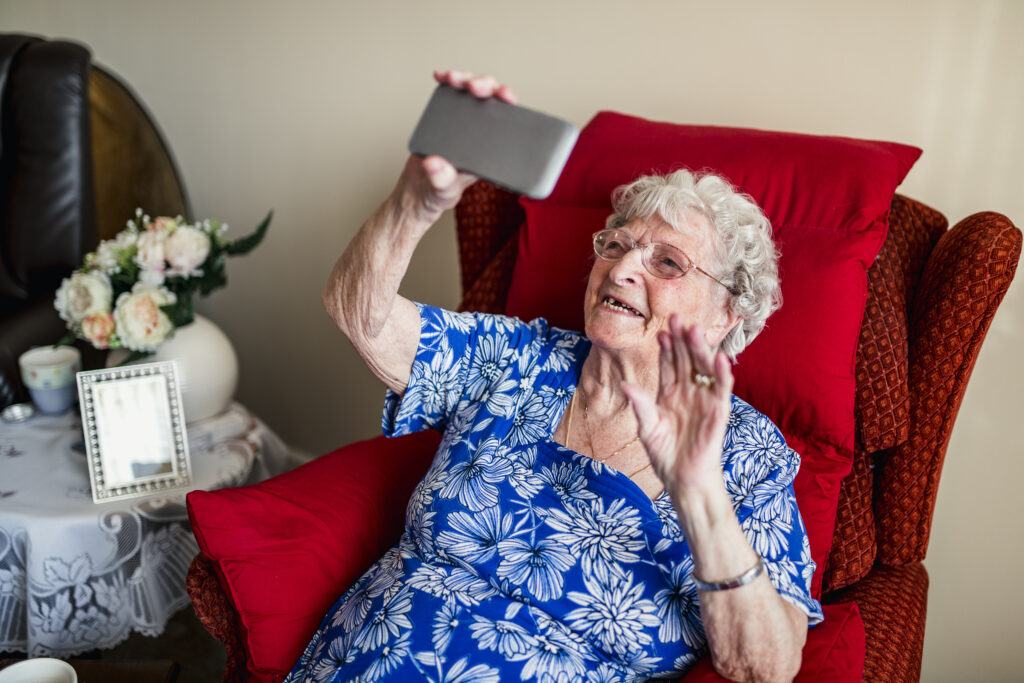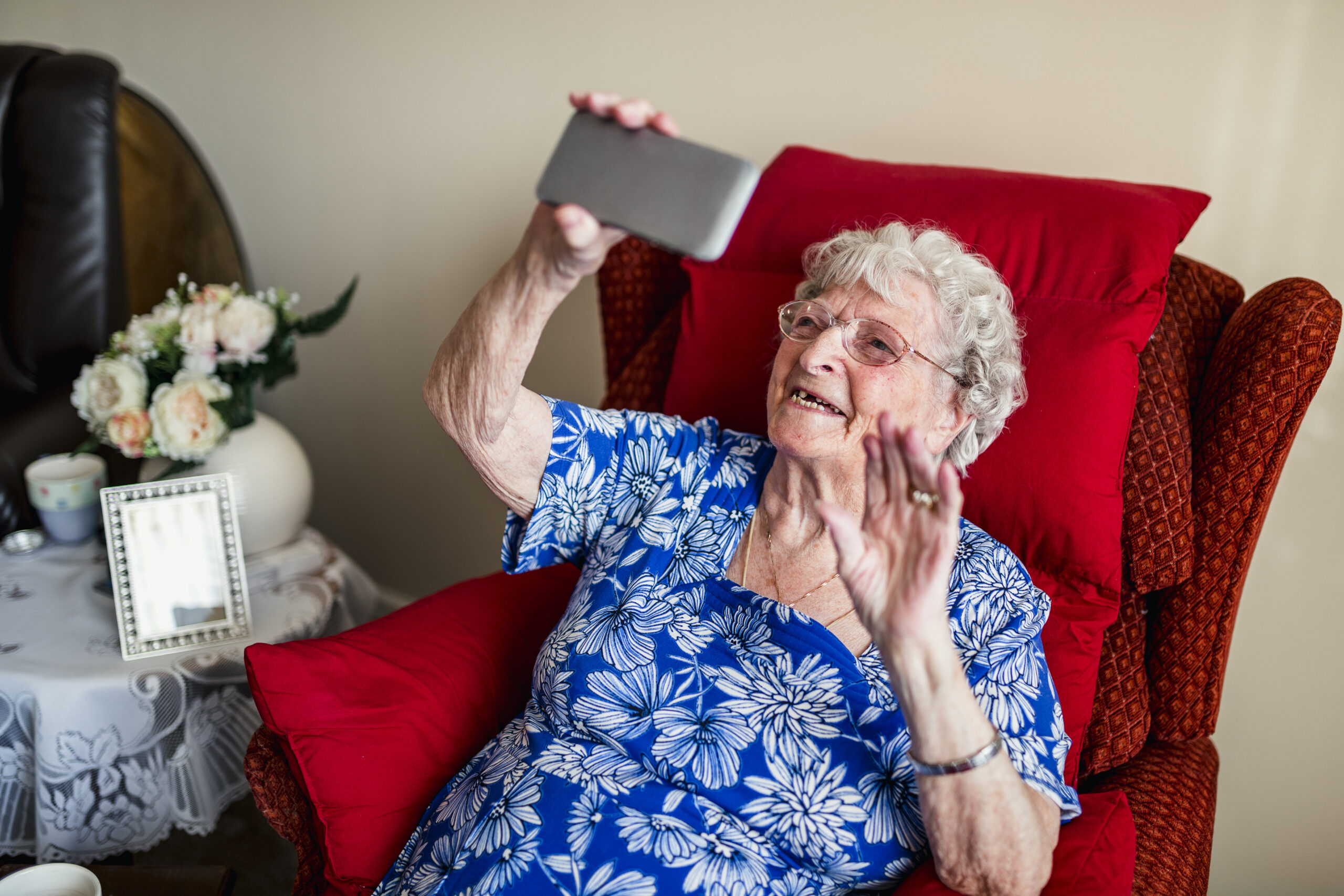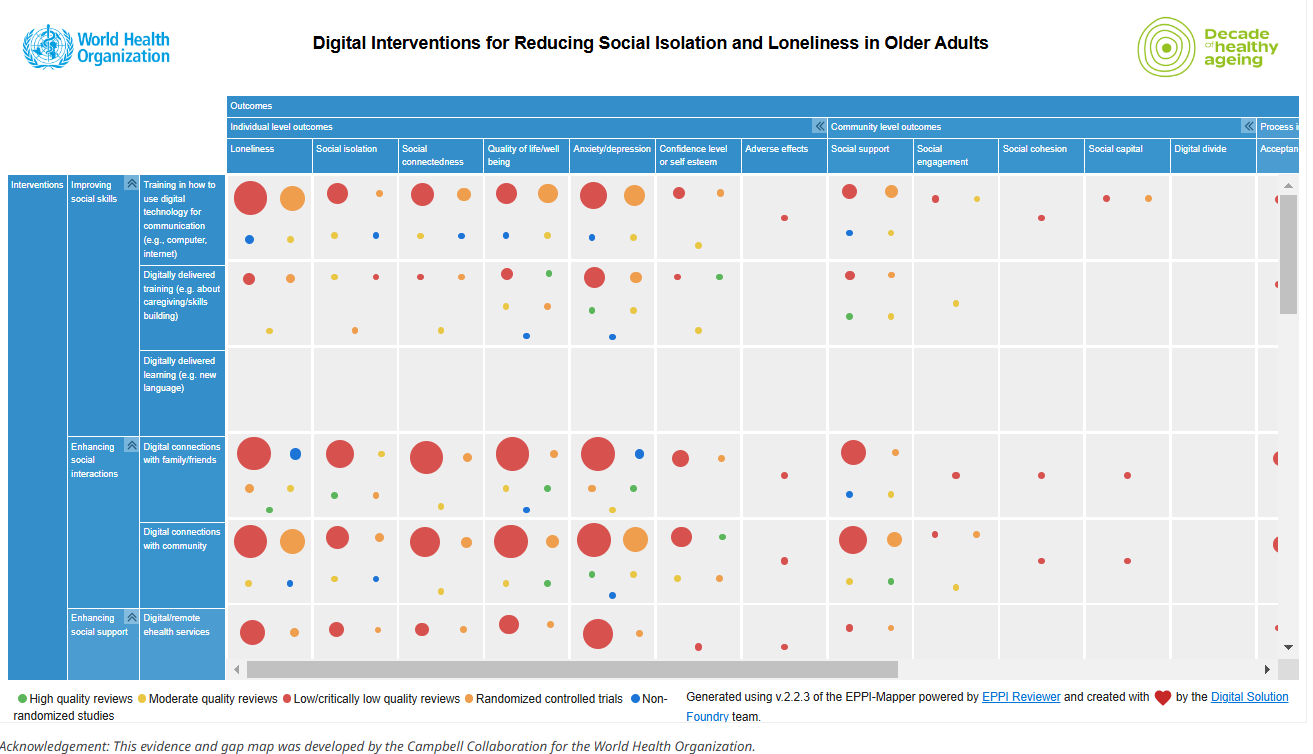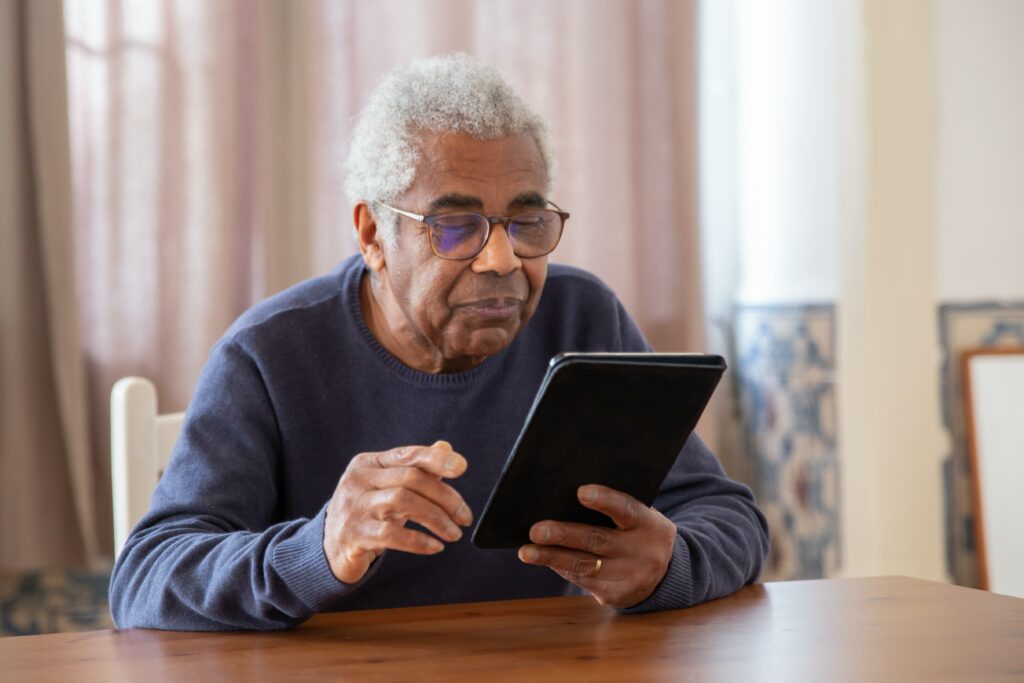Digital Interventions for Reducing Social Isolation and Loneliness in Older Adults


A few weeks ago, we shared a blog post on the World Health Organisation (WHO) Evidence and Gap Map documenting the prevalence of evidence around the effectiveness of face-to-face interventions for reducing social isolation and loneliness.
Today, we’d like to spotlight another brilliant resource– the WHO Evidence and Gap Map of Digital interventions for reducing social isolation and loneliness in Older Adults.
About this map?
Older adults (over 60 years) are one of the most vulnerable populations to social isolation and loneliness. As the world’s population continues to age at a rapid rate, and in light of the recent COVID-19 pandemic and its implications, it is important to find ways to address social isolation and loneliness for this audience.
As a response to this epidemic, in 2022 the World Health Organisation (WHO) collaborated with Campbell Collaboration to develop an evidence and gap map on existing digital interventions to reduce social isolation and/or loneliness among older people. A total of 200 articles were reviewed and included in this evidence and gap map. Of these, 103 were primary studies and 97 were reviews.
What is an Evidence and Gap Map?
Evidence and Gap Maps are innovative, interactive tools that provide a visual snapshot of the current research landscape in the field of loneliness and social isolation. They highlight the amount of research in a given area, the quality of this research and of course, spotlight areas where there is little or no evidence/research available.

The chart contains various interventions and their delivery methods on the left-hand side, while the outcomes and indicators of social connections are listed across the top. The chart uses color-coded circles to represent different types of studies and their quality.
Key Findings from the review
The evidence and gap map identified the following issues:
- There is a lot of research and resources allocated to providing digital interventions following COVID-19.
- The majority of the studies are of low quality as assessed using Campbell’s guidelines.
- The most commonly used digital interventions for older adults were videoconferencing, phone calls, robot pets and socially assistive robots.
- There is limited research from low-income countries in this field.
- None of the included studies or reviews assessed affordability or digital divide (disparities in access to technological interventions).
How might this map help you?
- Academics & Funders: Spotlight areas of major gaps as priorities for further research and funding.
- Public Sector and NGOs: Inspiration for effective interventions. Jump into the map to discover effective, evidence-based interventions that might support older adults in your community.
- Policymakers & Private sector: Leverage this evidence and gap map as an all in one directory to fast track your research and help ensure decisions are based on solid evidence.
Ready to explore?
Click Access the tool.
For a detailed overview of how to read these maps please see our blog “Evidence Based Interventions for Reducing Social Isolation and Loneliness”




Responses